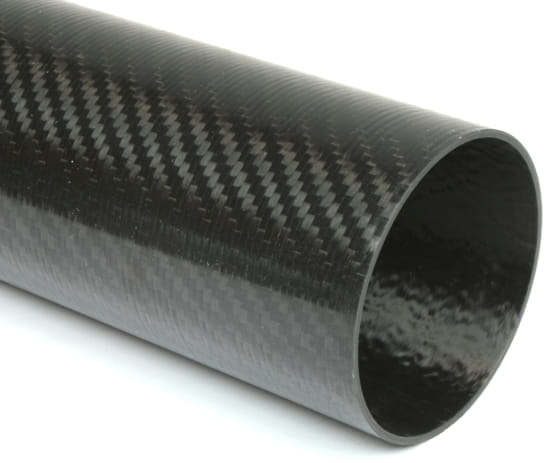When it comes to producing robust, lightweight materials, carbon fiber molding is revolutionary. Industries like aerospace, automotive, and sports greatly benefit from it. Renowned for its strength and light weight, carbon fiber has several benefits. Molding this material into various shapes unlocks the potential for innovative designs. It’s not just about making things lighter; it’s about enhancing performance and efficiency. Whether it’s faster cars, more fuel-efficient planes, or high-tech sports equipment, carbon fiber molding plays a crucial role. Let’s see this fascinating topic and explore how it’s shaping the future of manufacturing!
What is carbon fiber molding?
Carbon fiber molding is a process used to make strong, lightweight parts out of carbon fiber materials. First, manufacturers mix carbon fibers with plastic resin. This creates a moldable material. This material is then put into a mold that resembles the finished product. They apply heat and pressure to the mold. This makes the material take the mold’s shape and harden. The result is a carbon fiber part that’s light and strong. People use these parts in cars, planes, and sports equipment for their strength and low weight. This method is popular because it makes durable and lightweight components efficiently.

What are carbon fiber molding processes?
Carbon fiber molding is a fascinating process used to create strong, lightweight components for various applications, from aerospace to automotive and sports equipment. Let’s explore this process step by step in a detailed, easy-to-understand way.
Understanding Carbon Fiber Material
Carbon fiber consists of thin, strong crystalline filaments of carbon. Manufacturers use it to make durable, lightweight composite materials. Think of it like a super-strong thread that, when combined with a plastic resin, becomes a material stronger than steel but much lighter.
Design and Mold Preparation
Every carbon fiber part starts with a design. Engineers create a design based on what the part needs to do. Then, they make a mold. This mold shapes the carbon fiber into the desired form. It’s often made of metal or another durable material.
Cutting the Carbon Fiber Cloth
Now, it’s time to cut the carbon fiber cloth. This cloth looks like fabric but is made of carbon fibers. Workers cut it into shapes that fit the mold. They use special scissors or cutting machines for precision.
Applying the Resin
Next, they mix a special resin. This resin acts like glue, helping the carbon fibers stick together and hold their shape. They carefully apply the resin to the carbon fiber cloth. It’s important to get the right amount – too much or too little can weaken the final product.
Laying the Carbon Fiber in the Mold
Employees insert the carbon fiber fabric covered in resin into the mold. They must place it carefully to avoid wrinkles or air bubbles. These imperfections can weaken the final part.
Curing Process
Now, the mold goes into a machine called an autoclave. This machine applies heat and pressure to cure the resin. Curing means turning the liquid resin into a solid. It binds the carbon fibers together, making them strong and rigid.
Cooling and Demolding
After curing, the part needs to cool down. Once it’s cool, workers remove it from the mold. This step is delicate. They need to avoid damaging the part or the mold.
Trimming and Finishing
The part might have extra material or rough edges. Workers trim these off, usually with a special saw or grinder. Then, they sand the part to make it smooth. For protection and aesthetics, they may additionally apply paint or a clear coat.
Inspection and Quality Control
Quality is crucial. Each part undergoes inspection to make sure it meets all the standards. They check for defects like cracks or weak spots. If a part isn’t perfect, they either fix it or start over.
Final Assembly
Finally, the carbon fiber part is ready for use. It might be a piece of a larger product. In that case, workers assemble it with other parts to make the final product. Imagine it like assembling a sophisticated puzzle in which every piece has to fit precisely.
Advanced Techniques and Variations
There are advanced methods too. For example, some parts use pre-preg carbon fiber. This is carbon fiber pre-impregnated with resin. It requires less work during molding but needs careful storage and handling.
Continuous Improvement
The world of carbon fiber molding is always evolving. Engineers and technicians constantly look for ways to make stronger, lighter, and more efficient parts. They experiment with new materials, molding techniques, and designs.
This process shows how science and careful craftsmanship combine to create amazing materials. Each step is vital to ensuring the final product is strong, lightweight, and meets all the necessary requirements. Carbon fiber molding is a perfect blend of technology and skill, producing materials that help push the boundaries of what’s possible in various industries.

FAQs
What is Carbon Fiber Molding?
Carbon fiber molding is a process where we shape carbon fiber material into lightweight, strong parts. We use molds to give the carbon fiber its shape, often adding resin to bind the fibers together. This technique is popular in creating parts for cars, planes, and sports equipment.
Why Do We Use Carbon Fiber for Molding?
We use carbon fiber because it’s incredibly strong and yet surprisingly light. This makes it perfect for things where weight matters, like airplanes and racing cars. Its strength also means the parts last longer.
How Do We Mold Carbon Fiber?
Laying the material in a mold, adding resin, and curing it are the standard steps in molding carbon fiber. There are different methods, like vacuum bagging, compression molding, and resin transfer molding. Each method suits different types of products.
Can Carbon Fiber Molding Be Used for Large Parts?
Sure, Carbon fiber allows for the molding of massive objects. Filament winding is an excellent technique for large, cylindrical forms. Because of its flexibility, carbon fiber is perfect for a wide range of large-scale applications, such as wind turbine blades and aircraft components.

